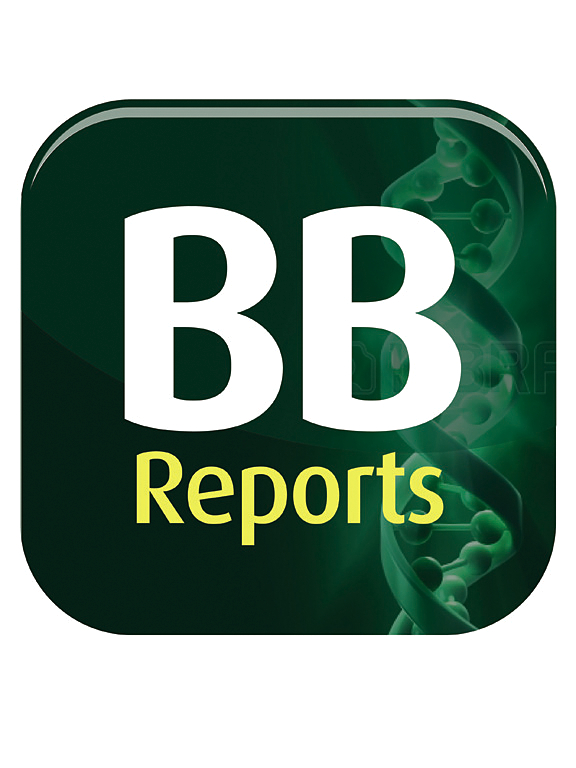热量限制模拟绿原酸和非西汀作为靶向ATG101的潜在自噬诱导剂
IF 2.2
Q3 BIOCHEMISTRY & MOLECULAR BIOLOGY
引用次数: 0
摘要
自噬是阿尔茨海默病等神经退行性疾病中受损的重要细胞保护过程。起始过程由蛋白激酶unc -51样激酶1 (ULK1)复合物介导。ATG101是一种胞质蛋白,作为哺乳动物细胞中ULK复合物的组成部分,在启动自噬中起着关键作用。了解个体自噬成分在不同条件下的调节过程对治疗干预措施的发展是重要的。热量限制模拟物(CRMs),如绿原酸(CGA)和非赛酮,在不减少热量消耗的情况下模拟热量限制的健康结果,是有希望的神经保护治疗候选物。在这项工作中,我们探索了CGA和非瑟酮的ATG101相互作用。利用分子对接和分子动力学(MD)模拟来研究这些CRMs与ATG101的相互作用,评估其结合稳定性和动力学。为了证实这些相互作用,我们在分化的SHSY5Y细胞中进行了定量实时PCR (qRT-PCR),分析了CGA和非赛特酮对ATG101基因表达的影响。我们的研究结果表明,与CGA相比,非瑟酮与ATG101形成了更稳定的复合物。然而,在转录水平上,两种CRMs都刺激了ATG101的mRNA水平。因此,这些crm可能负责它们作为自噬诱导剂的潜力。这些发现为crm通过触发自噬改善神经退行性疾病的分子过程提供了重要的见解。本文章由计算机程序翻译,如有差异,请以英文原文为准。

Caloric restriction mimetics chlorogenic acid and fisetin as potential autophagy inducers targeting ATG101
Autophagy is an important cytoprotective process impaired in neurodegenerative diseases such as Alzheimer's disease. The initiation process is mediated by the protein kinase Unc-51-like kinase 1 (ULK1) complex. ATG101, a cytosolic protein, plays a pivotal role in initiating autophagy as a component of the ULK complex in mammalian cells. It is important to understand the regulatory processes of individual autophagy components under different conditions for the development of therapeutic interventions. The caloric restriction mimetics (CRMs) such as chlorogenic acid (CGA) and fisetin mimic the healthy outcomes of caloric restriction without decreasing caloric consumption, constituting promising therapeutic candidates for neuroprotection. We explored the ATG101 interactions of CGA and fisetin in this work. Molecular docking and molecular dynamics (MD) simulations were used to investigate the interactions of these CRMs with ATG101, evaluating binding stability and dynamics. To confirm these interactions, we conducted quantitative real-time PCR (qRT-PCR) in differentiated SHSY5Y cells, analyzing the effect of CGA and fisetin on ATG101 gene expression. Our results indicated that fisetin forms a more stable complex with ATG101 compared to CGA. Yet, at the transcriptional level, both CRMs stimulate the mRNA level of ATG101. Therefore, these CRMs can be responsible for their potential as autophagy inducers. These findings offer significant insights into the molecular processes through which CRMs may improve neurodegenerative diseases by triggering autophagy.
求助全文
通过发布文献求助,成功后即可免费获取论文全文。
去求助
来源期刊

Biochemistry and Biophysics Reports
Biochemistry, Genetics and Molecular Biology-Biophysics
CiteScore
4.60
自引率
0.00%
发文量
191
审稿时长
59 days
期刊介绍:
Open access, online only, peer-reviewed international journal in the Life Sciences, established in 2014 Biochemistry and Biophysics Reports (BB Reports) publishes original research in all aspects of Biochemistry, Biophysics and related areas like Molecular and Cell Biology. BB Reports welcomes solid though more preliminary, descriptive and small scale results if they have the potential to stimulate and/or contribute to future research, leading to new insights or hypothesis. Primary criteria for acceptance is that the work is original, scientifically and technically sound and provides valuable knowledge to life sciences research. We strongly believe all results deserve to be published and documented for the advancement of science. BB Reports specifically appreciates receiving reports on: Negative results, Replication studies, Reanalysis of previous datasets.
 求助内容:
求助内容: 应助结果提醒方式:
应助结果提醒方式:


